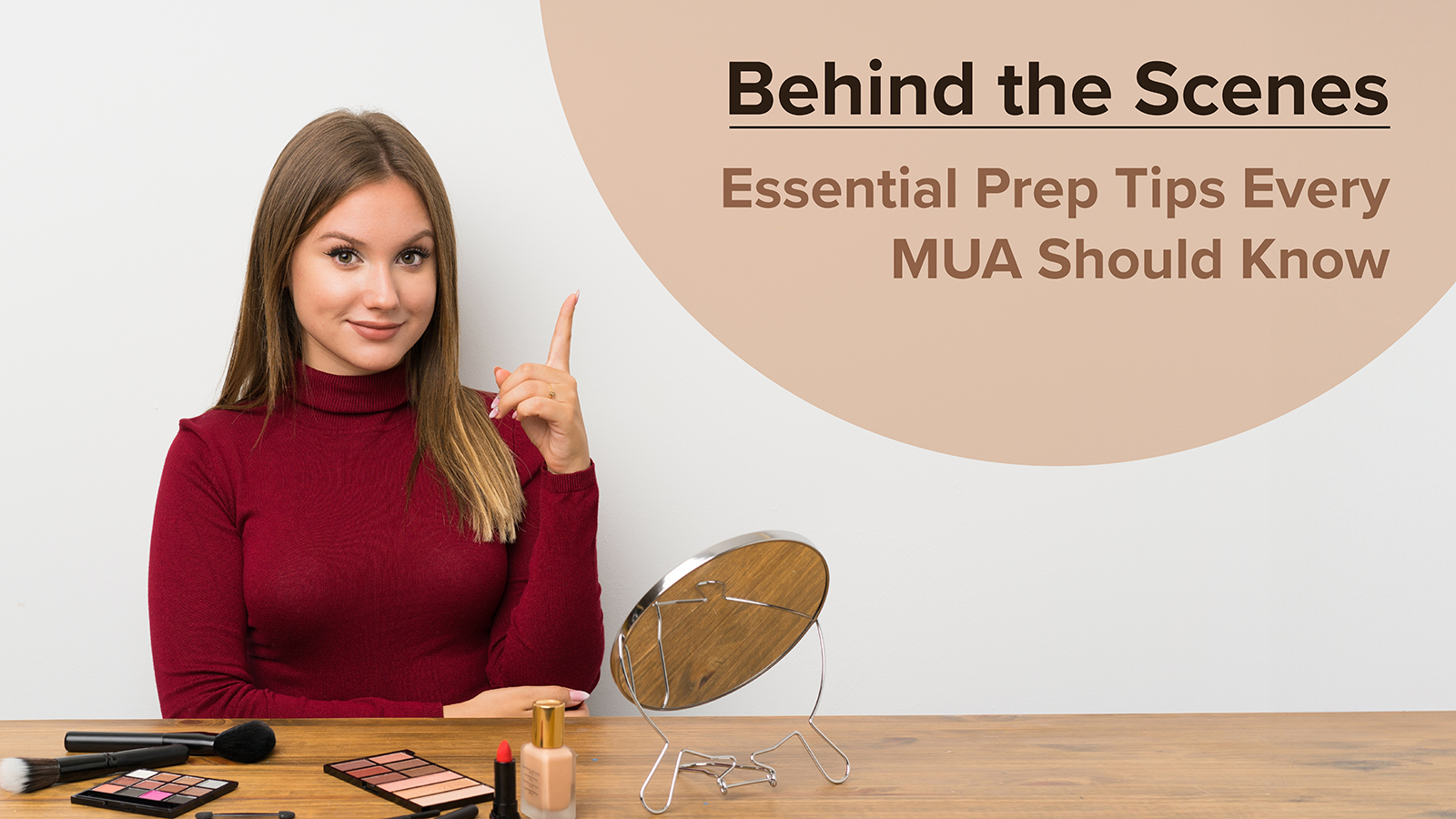Behind the Scenes: Tips for MUAs for Preparing the Models / Clients Before Makeup Application

As the makeup brushes come out and the studio lights are turned on, the real magic begins long before the first swipe of mascara. Every makeup artist knows that the perfect look starts long before the first brushstroke. Preparing your model or client’s skin correctly can make a lot of difference – between a good makeup day and a flawless one. Dive into these top tips for makeup artists to ensure your makeup dazzles from sunrise to sunset.

MUA Tip 1: Starting with a Clean Slate: The Power of Cleansing
Why Cleansing Matters: A thorough cleanse is the first among the makeup tips bible and the most critical step in any makeup routine. It removes dirt, oil, and leftover makeup, ensuring that anything you apply next sits beautifully and lasts longer.

Things to Keep in Mind:
- Opt for gentle cleansers to avoid stripping the skin of its natural oils.
- Pay special attention to removing any eye makeup with a dedicated remover to prevent irritation.
- Cleansing brushes or soft cloths can help provide a deeper clean without being harsh on the skin.
MUA Tip 2: The Smooth Path to Perfection: Exfoliation Essentials
Why Exfoliation Is Key: Another important tip for makeup artists is Exfoliation. Removing dead skin cells through exfoliation ensures a smoother makeup application and helps products penetrate better.
Things to Keep in Mind:
- Schedule exfoliation sessions a day before the makeup application to avoid any potential redness.
- Use chemical exfoliants like AHAs for a gentler approach compared to physical scrubs.
- Always follow up with a soothing moisturiser to rehydrate the skin.
MUA Tip 3: Balancing Act with Toners and Serums
Why Balancing pH is Crucial: Toners help restore the skin’s pH balance after cleansing, which is crucial for maintaining skin health and enhancing the effectiveness of subsequent products like serums.
Things to Keep in Mind:
- Choose alcohol-free toners to prevent drying out the skin.
- Apply serums that target specific skin concerns, such as hyaluronic acid for hydration or niacinamide for redness reduction.
- Let each product absorb fully before applying the next to maximise benefits.
MUA Tip 4: Moisturise Wisely: Tailored Hydration
Why It’s Essential: Moisturizing creates a smooth base, enhancing makeup application and longevity. It’s crucial to select a moisturiser that aligns with the client’s skin type.
Things to Keep In Mind:
- Choose Wisely: For oily skin, opt for a lightweight and oil-free moisturiser to avoid excess shine. Dry skin benefits from richer and hydrating formulas that prevent flaking.
- Application Tips: Apply gently to avoid skin stress and allow complete absorption before proceeding with makeup.
- Preparation Time: Let the moisturiser settle for a few minutes to fully hydrate the skin and ensure seamless makeup application.

MUA Tip 5: Prime Time: Securing the Look
Why Priming is Non-Negotiable: Primers not only help makeup adhere better, but also protect the skin from heavy products. They can minimise pores and create a silky base for smoother application.
Things to Keep in Mind:
- Select a primer based on the client’s skin type: matte-finish for oily skin and hydrating for dry skin.
- Consider colour-correcting primers to address specific skin concerns like redness or dullness.
- One of the underrated makeup tips is that you allow the primer to set for a few minutes before applying foundation, for best results.
MUA Tip 6: Choosing Tools of the Trade: Brushes and More
Why the Right Tools Matter: Good-quality makeup brushes and applicators can significantly enhance makeup application, by helping blend makeup seamlessly, for a natural look. The choice of good-quality makeup brushes, blending sponges, and high-quality makeup products is fundamental to achieving flawless makeup application.

Things to Keep in Mind:
- Invest in good-quality makeup brushes and keep them clean to prevent bacterial build-up and to ensure precision in application.
- Use sponges for a dewy foundation application and brushes for powders and blushes.
- Regular maintenance of your tools ensures they perform well and last longer.
- Select products that complement the client’s skin type and the desired makeup look, from foundations to eyeshadows.
- Experiment with different textures and product types to understand which combinations work best for different skin conditions and effects.
MUA Tip 7: The Final Check: Lighting and Mirrors
Why Lighting Matters: Optimal lighting and high-quality mirrors are crucial in makeup artistry. They ensure the makeup looks consistent and flawless under various light settings, which is essential for professional results.
Things to Keep in Mind:
- Utilise natural light when possible for the most accurate colour rendition.
- Invest in LED lights that mimic daylight for indoor settings.
- Use magnifying mirrors to perfect details that might be overlooked.

Conclusion: Preparation is half the art of makeup application. Prepping your client for a makeup session involves more than just having a steady hand and an eye for colour; it requires an understanding of skincare, the right products, and the best tools. These steps ensure that every client you work with not only looks their best, but also feels great about their makeup. Make these prep steps and tips for makeup artists staple in your routine to elevate your artistry and ensure stunning results every time.






